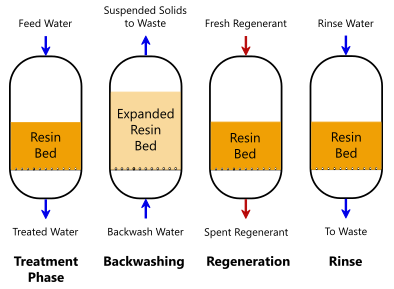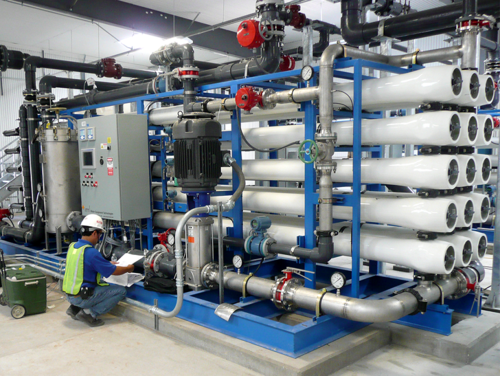Ingenious PFAS Treatment Solutions for Safer Water
The increasing prevalence of PFAS contamination in water supplies demands an essential exam of ingenious treatment options. In addition, arising bioremediation techniques offer a more lasting approach to taking on PFAS challenges. pfas management.
Introduction of PFAS Contamination
PFAS contamination has become a substantial ecological and public health worry. Per- and polyfluoroalkyl compounds (PFAS) are a group of artificial chemicals recognized for their determination in the setting and human body, leading them to be generally referred to as "for life chemicals." These substances have actually been widely used in various industries, consisting of firefighting foams, water-repellent materials, and food product packaging, primarily because of their water- and grease-resistant buildings.
The extensive use PFAS has resulted in their detection in soil, water supplies, and also in the blood of human beings and animals. Researches have actually linked PFAS direct exposure to countless wellness problems, consisting of developmental results in infants, immune system disorder, and various kinds of cancer cells. In addition, the environmental determination of these compounds complicates their destruction and removal, elevating issues concerning long-lasting ecological influences.
Governing bodies are progressively carrying out rigid standards to keep an eye on and reduce PFAS degrees in drinking water and various other environmental mediums. As recognition of PFAS contamination grows, it has actually ended up being imperative for communities and industries to seek efficient therapy remedies to mitigate exposure and secure public health and wellness.
Advanced Purification Technologies
As the seriousness to deal with PFAS contamination increases, progressed purification modern technologies have actually arised as a pivotal component in the removal efforts focused on getting rid of these persistent chemicals from water sources. These modern technologies utilize innovative devices to properly target and catch PFAS substances, which are infamously resistant to traditional therapy methods.
One of the most appealing strategies is making use of granular turned on carbon (GAC), which adsorbs PFAS particles due to its high area and permeable structure. This technique has actually been widely executed in both community and commercial settings, demonstrating substantial decreases in PFAS concentrations. Additionally, ion exchange resins have acquired traction, specifically developed to precisely bind PFAS ions from water, hence facilitating their elimination.
Membrane purification technologies, such as reverse osmosis and nanofiltration, additionally show effectiveness in PFAS removal by physically dividing pollutants from water - pfas management. These systems can achieve high levels of pureness, making them appropriate for drinking water applications
Chemical Therapy Advancements
Various chemical treatment advancements are being checked out to efficiently deal with PFAS contamination in water products. One appealing approach includes the use of sophisticated oxidation processes (AOPs), which use powerful oxidants such as ozone, hydrogen peroxide, or chlorine dioxide combined with UV light to break down PFAS compounds into much less damaging compounds. This method has actually demonstrated efficiency in lab settings, revealing possible for scalability in real-world applications.
Another cutting-edge method is the growth of ion-exchange resins particularly developed to target PFAS. These resins can uniquely adsorb PFAS substances from water, enabling their elimination during therapy procedures. Recent improvements have boosted the performance and capacity of these materials, making them a positive option for water therapy facilities.
Additionally, researchers are checking out using chemical representatives like persulfate and ferrous ions to boost the deterioration of PFAS in infected water. These agents can generate chemical reactions that assist in the failure of consistent PFAS compounds.
Arising Bioremediation Methods
Current developments in chemical treatment technologies have led the way for checking out bioremediation strategies as a practical option for dealing with PFAS contamination. Bioremediation takes advantage of the all-natural metabolic processes of microbes to degrade or transform pollutants, making it an enticing strategy for dealing with consistent pollutants like PFAS.
Emerging techniques in bioremediation include the usage of genetically crafted bacteria that can specifically target and break see it here down PFAS compounds. These microbial pressures are being created for their enhanced deterioration abilities, boosting the efficiency of the remediation procedure. Furthermore, scientists are examining the potential of plant-assisted bioremediation, where certain plant types might uptake and withdraw PFAS from infected dirt and water.
One more encouraging approach is the application of bioaugmentation, which entails introducing helpful bacteria right into polluted settings to enhance the deterioration of PFAS. This approach can help with quicker remediation timelines and boost total efficiency.

Regulative Structures and Specifications
A thorough regulative framework is essential for efficiently handling PFAS contamination and guaranteeing public wellness protection. The boosting recognition of per- and polyfluoroalkyl materials (PFAS) as ecological contaminants has triggered various federal and state agencies to establish standards that govern their presence in water materials. The U.S. Environmental Protection Agency (EPA) has developed health and wellness advisories and is functioning toward setting enforceable limitations for PFAS in drinking look here water.
State-level laws differ dramatically, with some states adopting more stringent standards than those suggested by the EPA. These policies often include maximum pollutant levels (MCLs) for specific PFAS compounds, surveillance needs, and reporting responsibilities for water utilities. Additionally, arising structures concentrate on the remediation of contaminated websites, highlighting the requirement for effective therapy modern technologies.

Conclusion
To conclude, the advancement and execution of innovative PFAS therapy remedies are important for attending to the prevalent problem of water contamination. Advanced filtering technologies, chemical therapies, and emerging bioremediation techniques collectively present a multifaceted strategy to properly minimize and weaken PFAS degrees. As regulative structures remain to progress, incorporating these innovations will be necessary to secure public health and wellness and restore the honesty of polluted water sources, ultimately adding to a cleaner and safer setting.